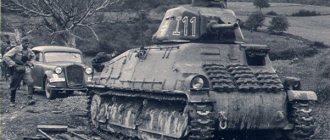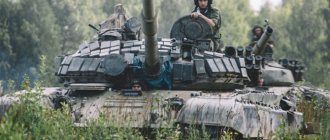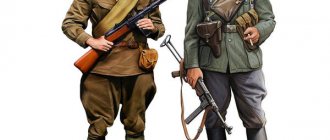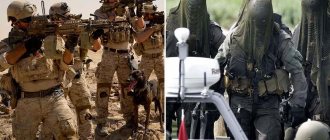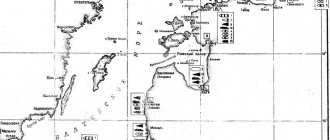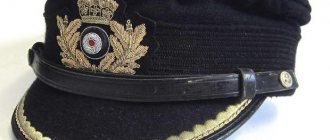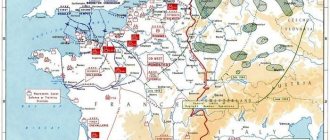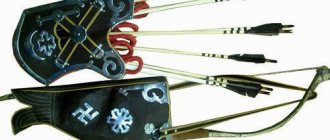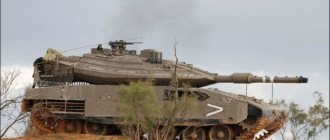What is the Wehrmacht? The definition of this word has a broad meaning. In German, this term refers to any armed forces. But nowadays the word “Wehrmacht” is used to refer to the army of Nazi Germany. It included ground forces, navy and aviation. After the Nazis came to power in 1933, Adolf Hitler's most daring move towards the world community was the formation of a modern army capable of conducting offensive operations. To implement grandiose plans to seize new territories, the Third Reich required numerous and well-organized armed forces.
Treaty of Versailles
After defeat in the First World War, Germany was forced to submit to the victorious countries, which imposed a number of severe restrictions on the size and equipment of its army. Under the terms of the Versailles Peace Treaty, the maximum permissible number of German armed forces was 100 thousand people. Germany was prohibited from having submarines, heavy artillery and combat aircraft. The navy could include no more than 6 cruisers, 6 battleships and 12 destroyers. The new army, created during the era of the Weimar Republic, was called “Reichswehr”, which literally means “imperial defense”. In accordance with the peace treaty, the German government abolished universal conscription.
However, Germany secretly sought to rebuild its armed forces. Already in the twenties of the last century, she began to look for ways to circumvent the terms of the Versailles agreements. In the hope of a revival of combat aviation in the foreseeable future, secret schools were created to train military pilots.
Hats
The Wehrmacht uniform includes headdresses. These include caps, caps, steel helmets, and berets.
The caps along with the cockade were sewn on one continuous T-shaped base. Then insignia were attached to them.
Berets were used by tank crews. The headdresses had a cushion made of thick rubber, which was lined with black wool fabric. The inside was stitched with leather and had an elastic base. A wreath with oak leaves and an eagle with a swastika were embroidered on the beret. After 1941, this headdress was abolished. The Wehrmacht troops stopped using berets.
The caps were made with a solid cockade, complemented by braided cord piping, buttons, and insignia. There were caps for all military ranks, and separately for higher ranks.
The steel helmet had a standard shape, although its design underwent minor changes over the years. Its main task was to protect the head, neck, and shoulders from shell fragments, shrapnel, and bouncing stones. Until 1935, the Wehrmacht used helmets of the 1916 model. Later a smaller and lighter version was introduced, making it more practical. By 1940, a new version was released, and from 1943, helmets began to be produced without emblems, in gray color.
The Nazis came to power
After the death of German President Paul von Hindenburg, Adolf Hitler became head of state and holder of unlimited power. He took command of the armed forces. Soon, the entire personnel of the German army took a special oath, the text of which mentioned personal devotion to the Fuhrer.
In 1935, the Reichswehr was officially renamed the Wehrmacht. This was the beginning of an open violation of the Versailles Peace Treaty. Universal conscription was reintroduced in the country. Hitler announced plans for a large-scale rearmament of the German army. The Nazi government significantly increased the level of spending on the defense industry. It was supposed to bring the total number of Wehrmacht divisions to thirty-six, which most openly violated the terms of the Versailles agreements.
Personnel
The troops of the Third Reich were formed from volunteers and conscripts. All recruits were exclusively German. Residents of occupied countries were not subject to mobilization into the Wehrmacht. This rule was a consequence of fascist ideology, which proclaimed the superiority of the German nation. Even foreign volunteers were generally not allowed to join the German army.
This policy changed after the invasion of Hitler's troops into the Soviet Union. Propagandists of the Third Reich stated that the fight against world communism, waged by the Wehrmacht, is the concern of not only Germany, but also the European countries it occupied. German authorities began conscripting residents of the Netherlands and Poland for military service. On the territory of the USSR, the Wehrmacht included the so-called eastern legions, formed from Soviet citizens opposed to the communist regime.
Military uniform
The Wehrmacht uniform had its own standards, but during the war, deviations from them were considered normal. Some discrepancies were even reflected in special orders. Soldiers often changed their uniforms on their own, following their own taste and fashion trends.
The presence of foreign units in the troops also influenced the deviation from the standard uniform. When sewing, they all used different materials and fabrics, the texture and color of which significantly changed the tone. For example, the gray colors of the 1939 and 1945 uniforms are significantly different:
- 1939 – gray-blue cloth;
- 1940 – gray-green;
- 1941 – stone gray;
- 1944 – gray-brown.
Despite the fact that officers had to purchase uniforms themselves, they were allocated money for this. Therefore, all military uniforms were considered the property of the Reich. Soldiers and officers were required to be responsible for its safety. To do this, they were given a darning kit and shoe polish.
The main materials for sewing uniforms were gabardine, teak, artificial and natural silk, cotton and woolen fabric. The officers had the opportunity to order uniforms made of comfortable and high-quality fabric. Their uniforms were often fitted and lightly padded at the shoulders. The patches and insignia were handmade.
Uniforms were produced at seven enterprises located in Berlin, Munich, Erfurt, Vienna, Hanover, Königsberg, and Stettin. The Wehrmacht army received uniforms from these cities. The uniform was stamped with a stamp indicating the name of the city and the year of issue. For example, the stamp "M 44" means that the uniform was produced in Munich in 1944.
SS troops
The combat units of the National Socialist Party were originally intended to ensure the personal safety of Adolf Hitler. Gradually, the small paramilitary organization turned into a full-fledged army, the number of which in 1945 reached 1 million people. SS divisions operated autonomously and were not part of the Wehrmacht. This made it difficult to exercise overall command of the armed forces of Nazi Germany. SS troops participated in combat operations and also committed acts of genocide. Subsequently, an international tribunal declared this organization criminal.
Wehrmacht assault groups
It is known that during the Second World War, Wehrmacht units accumulated extensive experience in overcoming defense lines and fortified areas. The German army encountered them in Poland, Belgium, France, Greece, Yugoslavia. The Germans were also familiar with the fortifications, which they got without a fight after the occupation of Czechoslovakia. At the Czechoslovak fortifications, German assault groups practiced the coherence of their actions, which was a good preparation of these units for the Second World War.
Soldiers of the Wehrmacht assault group in battle on the outskirts of Leningrad. The soldiers are armed with two MG-34 machine guns and a Flammenwerfer 35 backpack flamethrower Source – https://waralbum.ru
The assault group was actually a combined platoon consisting of soldiers from various units. Such groups were formed in preparation of Wehrmacht troops for the assault on individual bunkers, bunkers, defense lines or fortified areas of the enemy. After completing their assigned tasks, the groups disbanded and the soldiers returned to their main units. The assault group was divided into detachments and groups, each of which was assigned specific functions.
The commander of the assault group had to exercise overall command of the group, effectively being the platoon commander. This German platoon leader was armed with an MP 38/40 submachine gun, but could also use captured automatic weapons. According to the 1944 Charter, he had to have the following equipment: binoculars, scissors for cutting barbed wire, hand grenades (the number of grenades could be different), a signal pistol with flares, a compass, a whistle, a trench knife. He could also be given a device for silent shooting.
The detachment for undermining or destroying obstacles consisted of 3-4 soldiers from a sapper infantry platoon. Their task included blowing up barriers and creating passages in minefields and wire fences. The detachment also ensured the passage of units following the assault group through these passages. The sappers were armed with ordinary Mauser infantry rifles of the 1898 model or captured rifles. At the same time, they could have other small arms. The sappers were also given 3 grenades, shovels, scissors for cutting barbed wire, axes with nail pullers, sand bags, extended demolition charges according to the obstacles and standard edged weapons - trench knives.
German sapper at the Packkiste Nr.14 box with one-kilogram demolition charges Sprengbuchse-24 Source – wwwnationaalarchief
The group for the destruction of firing points and bunkers usually included 2-3 soldiers, mainly from an infantry sapper platoon. They were armed, as a rule, with pistols, although they were also entitled to one rifle. They were also given 10 sandbags. The group’s task was to block the bunker embrasures with bags of sand or soil, disabling the machine guns and machine gunners of the bunker garrison. To do this, sappers had to throw grenades at the embrasures or blow them up using standard one-kilogram or three-kilogram charges on poles.
The German assault group receives a mission. Stalingrad, 1942 Source – https://waralbum.ru
The group for the destruction of firing points and bunkers was assigned a crew of a 37-mm anti-tank gun, and since 1944, one or two crews of anti-tank guns armed with standard anti-tank guns (PzB.38, 39) or captured anti-tank guns. The anti-tank crews were armed with pistols and grenades, and were also equipped with a demolition charge (3 kg), detonators and poles. The charge was used if the group could not cope with the embrasure using grenades alone.
The crew of the 37 mm Rak 35/36 anti-tank gun lowers the gun barrel by -8° to fire at a Soviet bunker from a short distance. One of the gun servants places the bipod wider to give the gun more stability on the concrete surface Source – plan-barbarossa.ru
The cover group consisted of two or three detachments of 2-3 people. The group's soldiers were armed with standard or captured small arms and a large supply of grenades. They were also issued additional armor-piercing cartridges, smoke grenades or bombs, flags to indicate the forward edge, and signal flags to indicate the targets of their aircraft. The group could include one or two crews of MG-34 machine guns. The cover group provided the flanks of the group for the destruction of firing points and bunkers, and was also supposed to cover it in case of retreat.
Calculation of the German PzB anti-tank rifle. 39 Source – sporting-ru.ru
The smoke screen squad, as a rule, consisted of 2-3 people, but it might not have been formed. In this case, soldiers of sappers, special troops (Nebeltruppen) or artillery could be involved in setting up smoke screens. The standard weapons of the smoke screen squad included small arms, 4 hand grenades, 8 smoke grenades or smoke bombs, 1 entrenching tool, 1 wire cutting scissors. The presence of other weapons and equipment, depending on the situation, was not excluded.
Standard sapper German 3-kilogram explosive charge (Geballte Ladung 3 Kg) with holes in the box intended for detonators Source – trizna.ru
Support detachment - its number was not regulated. These were the soldiers who followed the rest of the groups and carried:
- 2-3 additional demolition charges (3 kg) with detonators and poles;
- uniforms, equipment, excess weapons, additional ammunition, armor-piercing cartridges, etc. left by the assault group;
- hand grenades, smoke grenades or checkers and other weapons and equipment.
If necessary, a reserve detachment could also be formed.
The Wehrmacht assault group attacks the entrance block of bunker No. 179 of the Kyiv fortified area Source – photo archive of MAIF “Citadel”, Kiev. Website relicfinder.io.ua
The assault group could be allocated horse-drawn transport (gig) or vehicles to deliver the group and its equipment to the front line. Assault groups could also be reinforced by special sapper units - stormpioneers (Sturmpioniereinheiten; Sturmpioniere), that is, specially trained sappers and soldiers prepared to storm well-fortified enemy engineering structures. The standard weapons of stormtroopers could include special weapons (flamethrowers, rifle grenades, hand-held anti-tank grenade launchers), special equipment, special means of detonation, powerful explosives, etc.
The assault groups interacted with aircraft, indicating targets for bombing with flags and signaling their location with rocket launchers. If necessary, assault groups could be supported by tanks, self-propelled guns, other armored vehicles, and artillery.
Air Force
Wehrmacht aviation, known as the Luftwaffe, was a key element of the offensive strategy that was used to capture Poland and France. The German Air Force primarily used fighters and small tactical bombers. Combat aviation worked closely with ground forces. The huge number of fighters ensured air superiority. This made it possible to effectively bomb enemy command posts and supply lines.
Buttonholes and shoulder straps of generals
As mentioned earlier, Wehrmacht generals wore shoulder straps , which were woven using two thickened gold-metal strands and a silver soutache between them.
They also had removable shoulder straps , which (as in the case of the ground forces) had a lining made of scarlet cloth with a special figured cutout running along the contour of the harnesses (their lower edge). And the bent and sewn-in shoulder straps were distinguished by a straight lining.
Wehrmacht generals wore silver stars on their shoulder straps, but there was some difference: major generals had no stars, lieutenant generals had one, a general of a certain type of troops (infantry, tank troops, cavalry, etc.) had two, oberst general - three (two stars located next to each other at the bottom of the shoulder strap and one slightly above them). Previously, there was such a rank as Colonel General in the position of Field Marshal General, which was not used at the beginning of the war. The shoulder strap of this rank had two stars, which were located in its upper and lower parts. A field marshal could be identified by the crossed silver batons along his shoulder straps.
There were also exceptional moments. So, for example, Gerd von Rundstedt (Field Marshal General, who was removed from command due to the defeat near Rostov, chief of the 18th Infantry Regiment) wore the regiment number on his shoulder straps on top of his field marshal's batons, as well as the white and silver ceremonial buttonholes of an infantry officer troops in return for the richly ornamented gold buttonholes embroidered on a scarlet cloth flap (size 40x90 mm) for generals. Their design was found back in the days of the Kaiser’s army and the Reichswehr; with the formation of the GDR and the Federal Republic of Germany, it also appeared among generals.
From the beginning of April 1941, elongated buttonholes , which had three (instead of the previous two) ornamental elements and shoulder straps made of golden thickened cords.
Another sign of the general's dignity is stripes.
The field marshal could also carry in his hand a natural staff, which was made of particularly valuable wood, individually decorated, generously inlaid with silver and gold and decorated with reliefs.
Fleet
In historical sources, the naval forces of the Wehrmacht are usually called the Kriegsmarine. The main task of the fleet was to establish control over trade routes in the Atlantic, which were critical for the United States, Great Britain and the Soviet Union. At the beginning of the war, German submarines managed to cause significant damage to the naval convoys of the countries of the anti-Hitler coalition. The Kriegsmarine forces destroyed over a thousand Allied ships. However, the advent of detection tools such as radars and sonars sharply reduced the effectiveness of Germany's use of submarines.

